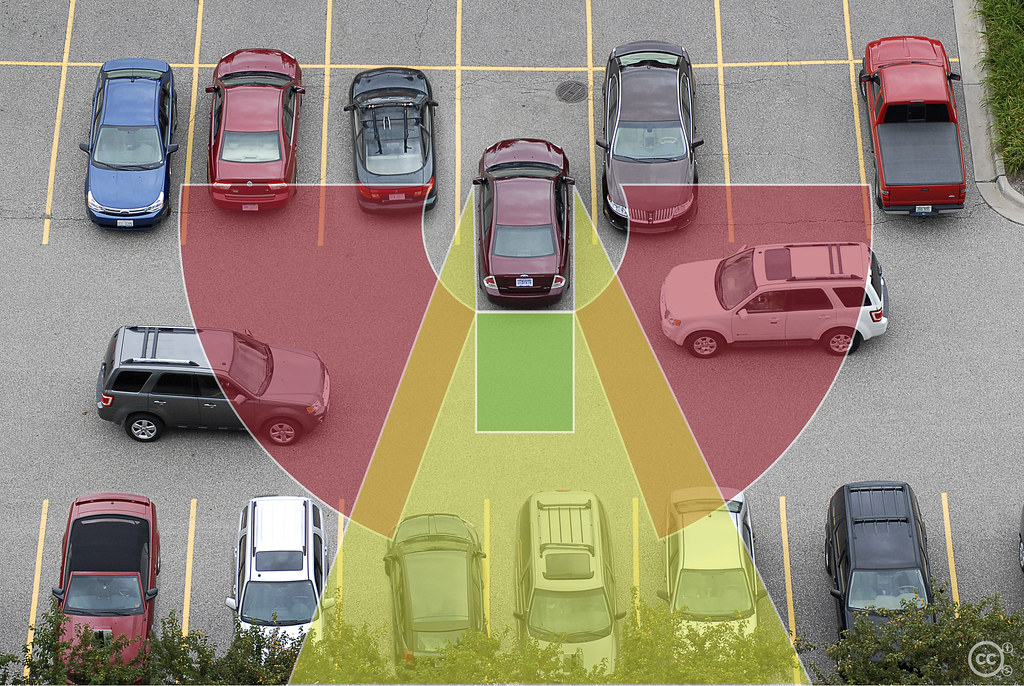Contents
– Reversing Radar: How it works
– Installation of the reversing radar
– Price of a reversing radar
To try it is to adopt it! This slogan is particularly true for the reversing radar, so much its use simplifies the life of the motorists. Served to indicate the obstacles in reverse, it is indeed convenient to avoid collisions, accidents and better estimate the distances. This post tells you more about the reversing radar.
Reversing radar: operation

Often mounted as standard on new vehicles, the reversing radar can also be installed as a retrofit.
A reversing radar consists of 4 or more sensors installed on the rear bumper connected with a control module. These sensors are arranged to cover a field of action on the vehicle’s back and rear sides.
The system is activated when the vehicle is in reverse via the reverse switch, which controls the reversing lights.
The sensors emit ultrasonic waves that travel the distance to the obstacle they are bounced off and back to the sensors. The duration of the round trip of the ultrasounds is analyzed by the module, which determines the effective distance of the obstacle. A beep is then emitted in the passenger compartment. Its frequency increases with the reduction of the distance until a continuous sound, emitted from approximately 30 cm of space between the vehicle and the obstacle.
This equipment preserves the integrity of the car and any pedestrian or child outside the field of vision. It is an element of signaling, but also safety.
Installation of the reversing radar
In the case of a second assembly, the operation does not present particular difficulties, provided that the following points are observed:
– to have sufficient knowledge of electricity to make the connections;
– follow the enclosed installation instructions;
Choose the sensors’ location on the shield carefully: they must be embedded, so you must drill the shield. The heights to the ground are often specified in the instructions.
If you do not feel capable of such an operation, you can call upon a professional who will take about 1 to 2 hours to install the device.
In case of failure

Despite the excellent reliability of the general device, some malfunctions can occur:
– One or more sensors may be defective: in this case, the area corresponding to the faulty sensor will no longer be covered;
– A power supply problem, or more rarely, a module deficiency, can cause the system to stop working;
– Following a shock, a sensor may come out of its housing. In this case, the sound signal will be triggered as soon as the reverse gear is engaged, whether there is an obstacle or not.
Price of a reversing radar
If it is offered as an option on a new vehicle, the approximate cost will be $300 to $500.
For a system to be installed as an aftermarket item, ask the equipment manufacturers and specialized websites. In general, several types of equipment are possible, adapted to all budgets:
– The basic kit, composed of 4 sensors, a module, and a buzzer, will be proposed at $60 on average;
– The kit without drilling, composed of an electromagnetic strip replacing the sensors, costs about $70;
– The wireless reversing radar, which also offers a LED display of the distance on the dashboard, is easier to install but will cost you about $90;
Head-up distance reading: this system includes a vision of the vehicle’s distance and speed in normal operation displayed on the windshield. This package will cost you between $150 and $200.
Here this post on reverse car radar reaches an end. Remember to share this post and write your comments below.

